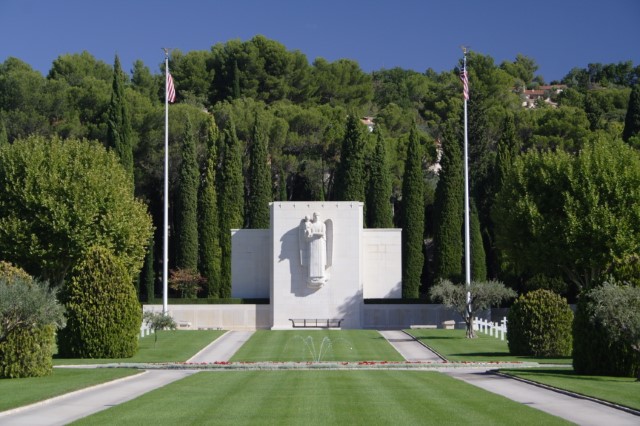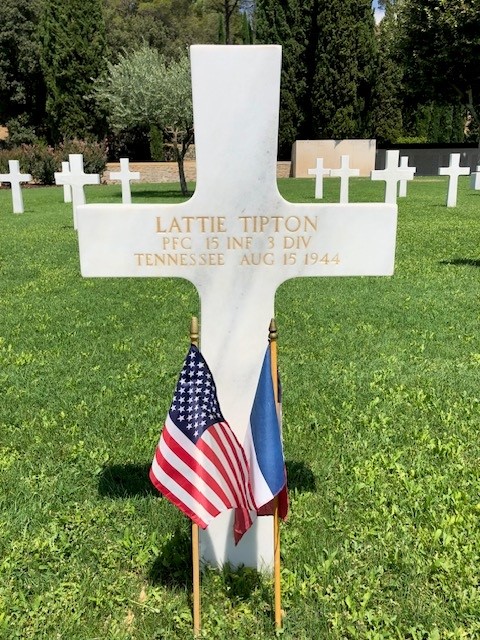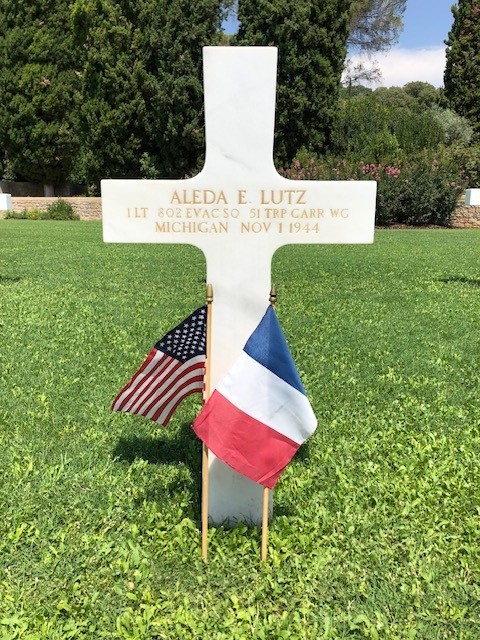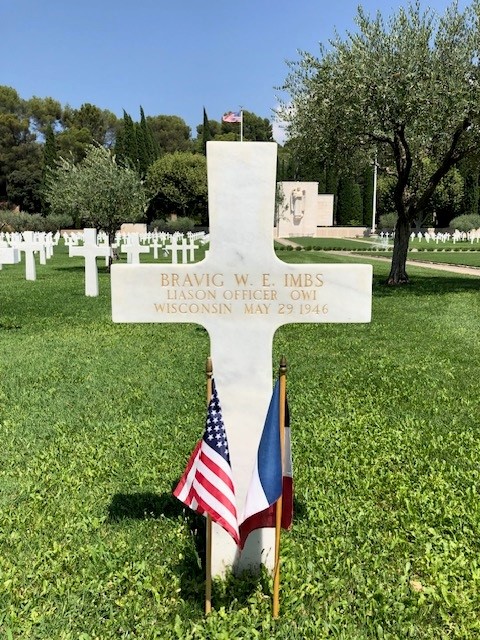Five things you may not know about Rhone American Cemetery
The location of Rhone American Cemetery was chosen because of its geographical location along the route of the U.S. Seventh Army’s drive through the Rhone River Valley. It is the only American Battle Monuments Commission’s cemetery in southern France.
A superintendent buried nearby
Rhone American Cemetery’s first superintendent, Harry Rhodes, who worked for the Commission between 1949 and 1969, is buried in the civilian cemetery next to our site.
The hero of a bestselling book: Pfc. Lattie Tipton
Maj. Audie Murphy’s book “To Hell and Back” was published in 1949 and became a bestseller. In the book, Murphy, often regarded as the most decorated soldier in U.S. military history, mentions his friend, Brandon, 91 times. Brandon was in fact Pfc. Lattie Tipton, Murphy’s best friend.
Tipton and Murphy participated in Operation Dragoon, the liberation of southern France, while serving with the Third Infantry Division. During a mission to take out a German pillbox, Murphy and Tipton came under fire. They returned fire and heard the shouts of “Kamerad!” coming from the enemy. Tipton saw them waving a handkerchief, and as soon as he moved forward to assess their surrender, the Germans opened fire and killed him. Murphy killed several Germans and took several more prisoners. For his actions, he received the Distinguished Service Cross but he always felt that Lattie Tipton should have received something for the action. Murphy vowed to send the medal to Tipton’s daughter, Claudean, which he did, but it was lost for many years before it was found and finally given to her.
Tipton is buried in plot C, row 6 and grave 14 at Rhone American Cemetery.
Only one woman among the service members
1st Lt. Aleda Lutz is the only woman buried at the Rhone American Cemetery. She started her military service as a nurse. It is estimated that about 59,000 military nurses were serving in the Army Nurse Corps alone during World War II, and very few of them were flight nurses. This was the path that Lutz chose, and during her time in the U.S. Army, she accomplished a lot. Lutz flew four times over the Anzio beachhead to recover wounded soldiers and served in six campaigns (Tunisia, Sicily, Rome-Arno, Southern France, and North Apennines). Lutz died when her aircraft crashed because of bad weather while recovering wounded soldiers.
She received the Distinguished Flying Cross posthumously. Also, after her death, a U.S. military hospital ship was named after her, as was the Aleda E. Lutz Department of Veteran’s Affairs Medical Center in Saginaw, Michigan.
Lutz is buried in plot D, row 8 and grave 19 at Rhone American Cemetery.
A Civilian with an unusual story
Among the four civilians buried at Rhone American Cemetery, one has a very special story.
Bravig Imbs was a journalist, radio broadcaster, poet, and novelist. While not incredibly well-known in the U.S. as a writer, Imbs was able to have poems and novels published. In fact, his poem “The Wind Was There” was set to music as recently as 2001. He lived in Paris through the 1920s, became a radio announcer in France, and eventually worked for the U.S. State Department as a radio announcer during World War II. He was killed in a jeep accident on May 29, 1946, while traveling on official business in France, working for the U.S. State Department.
He is buried in plot A, row 11 and grave 1 at Rhone American Cemetery.
A well-studied and visited battle map
Rhone American Cemetery’s battle map is a bronze relief map depicting such features as the Rhone River Valley and the mountainous border with Switzerland. It lies between the two flagstaffs.
While it is informative to visitors, it is also quite functional. From time to time, we greet a group of NATO lieutenants and captains who use it for a battle study. Once a year, we also welcome a contingent of German lieutenants who use it for the same purpose. The map depicts Operation Dragoon, starting on August 15, 1944, as well as follow-on operations up the Rhone River Valley as far as Epinal.
Sources:
RHAC team
ABMC Centennial Superintendent Booklet
Historical Services
ABMC documents and brochures
"Reports of Deaths of American Citizens Abroad, 1835-1974 for Bravig Wilbur Eugene Imbs. death reports in State Dept Decimal File, 1910 to 1962. Box 1713: 1945-1949". NARA. Retrieved 3 May 2017.
Audie Murphy, To Hell and Back (New York, H. Holt, 1949), 176-177.
The Nurses of World War II – Nurses in Wartime (udel.edu)
Monahan, E., & Neidel-Greenlee, R. All This Hell: U.S. Nurses Imprisoned by the Japanese. Lexington, Ky: University Press of Kentucky, 2000.
Monahan, E., & Neidel-Greenlee, R. And If I Perish: Frontline U.S. Army Nurses in World War II. New York: Knopf, 2003.




